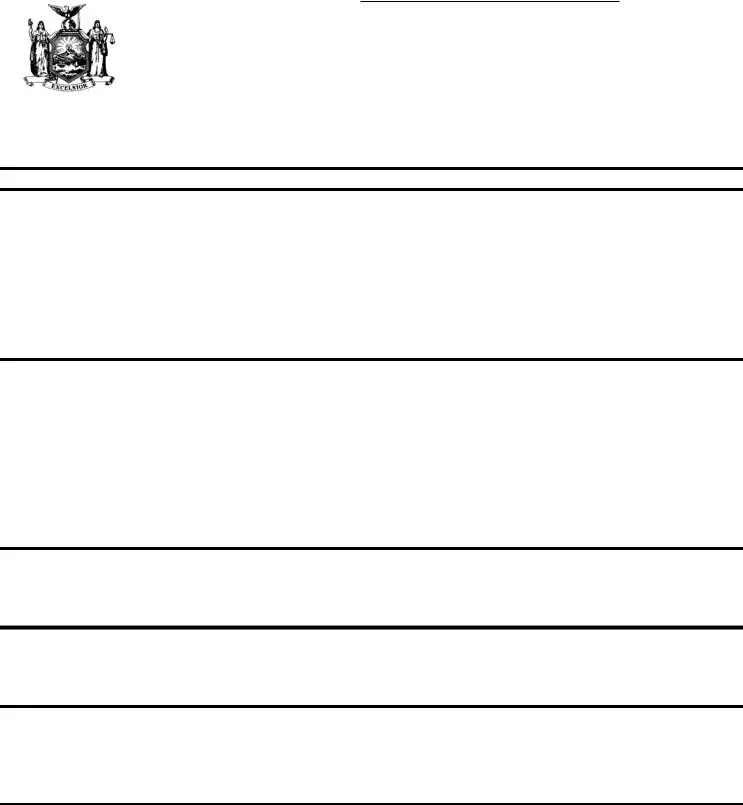The New York IFB 1 form, used for reporting insurance fraud, shares similarities with the California Department of Insurance Fraud Reporting Form. Both forms are designed to collect detailed information about suspected insurance fraud incidents, including details about the parties involved, the type of insurance policy, and the nature of the suspected fraud. They require the reporter to provide a brief statement of the suspected transaction, identify any involved parties, and note whether the incident has been reported to any other law enforcement agencies.
Analogous to the Workers' Compensation Fraud Reporting Form found in many states, the New York IFB 1 form requires information on the type of loss, which could include workers' compensation. Both forms gather details on the claim number, policy number, and the amount of loss, aiming to facilitate investigations into fraudulent claims that unjustly extract funds from workers' compensation insurance systems.
The National Insurance Crime Bureau (NICB) Fraud Reporting Form is another document paralleling the NY IFB 1 form in purpose and content. It allows the reporting of various types of insurance fraud, not limited to auto or workers' compensation fraud. Both documents collect comprehensive data on the fraud incident, including particulars about the claim and the entities involved, to support investigations carried out by their respective organizations.
The Auto Insurance Fraud Reporting Form also shares similarities with the NY IFB 1 form, focusing particularly on the automotive sector of insurance fraud. Like the IFB 1, it prompts for specific details related to auto insurance fraud, such as the Vehicle Identification Number (VIN) and license plate numbers, alongside other fraud types, enhancing the specificity and efficacy of fraud detection and prevention measures.
The Health Care Fraud Reporting Form, much like the NY IFB 1 form, targets a specific segment of insurance fraud. Both forms solicit detailed descriptions of the fraudulent act, information on the suspected parties, and the financial impact of the fraud. This specialization facilitates targeted investigations into fraudulent activities within the healthcare and medical insurance sectors.
A similar document is the Insurance Fraud Reporting Form used by various state departments and insurance companies. These forms are crucial in documenting suspected insurance fraud cases across a range of policies, including life, property, and casualty insurance. They record comprehensive details about the suspected fraud, echoing the structure and intent of the New York IFB 1 form in facilitating thorough investigations.
The Property Insurance Fraud Reporting Form mirrors the NY IFB 1 form by concentrating on fraud within the property insurance sector. It requires reporters to detail the suspected fraudulent incident, including the date, amount of loss, and specifics of the property involved, aiding in the specific investigation of fraud in property insurance claims.
Likewise, the Unemployment Insurance Fraud Report Form, while focusing on a different area of fraud, requires detailed submissions akin to those in the IFB 1 form. Both forms are vital for reporting fraudulent activity and provide spaces for outlining the fraudulent incident, perpetrator details, and monetary losses, thereby supporting the authorities in tracing and addressing fraudulent claims.
The Fire Insurance Fraud Reporting Form and the NY IFB 1 form both demand detailed information on incidents involving potential fraud, specifically with losses related to fires. Providing information such as the date of loss, amount, and any related policy or claim numbers, these forms are instrumental in investigating fire-related insurance fraud cases.
Lastly, the Life Insurance Fraud Reporting Form is another document with parallels to the NY IFB 1 form, focusing on fraud within the life insurance domain. Both forms gather significant details regarding the fraudulent activity, including information about the policies, claims, and individuals involved, serving a critical role in the detection and prevention of life insurance fraud.
